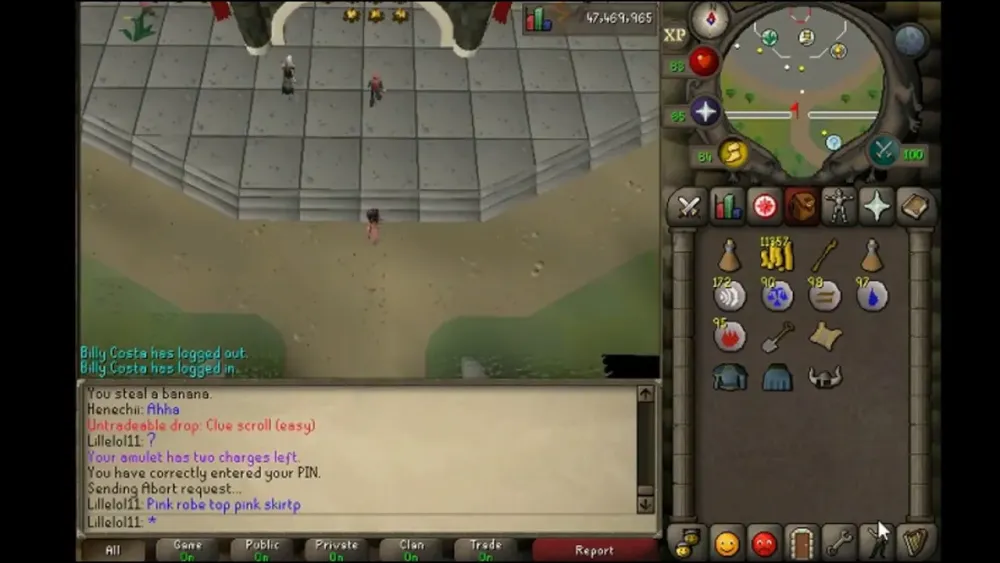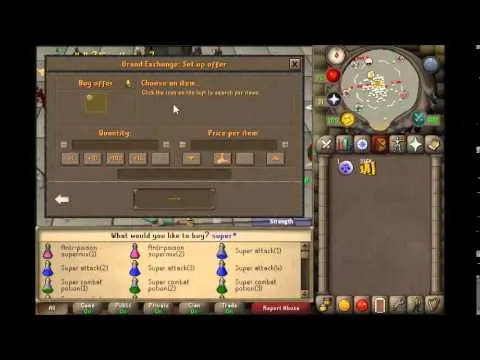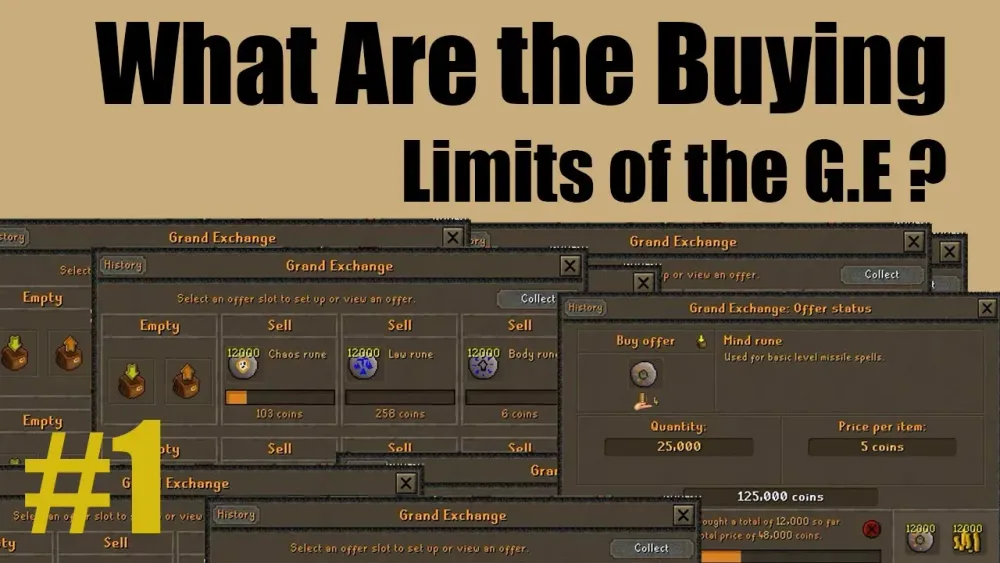Your cart is empty
OSRS Grand Exchange Price Guide: Your Ultimate Resource for Market Mastery

Welcome to the world of Old School RuneScape (OSRS), where the Grand Exchange (GE) serves as the bustling hub of trade and commerce. Whether you’re a seasoned merchant or a newbie adventurer looking to make some extra gold, understanding the OSRS GE price guide is key to mastering the market. In this comprehensive blog post, we’ll dive deep into how the GE works, how prices are determined, and the best tools and strategies to maximize your profits—all while keeping it simple and actionable. Let’s get started!
The Grand Exchange, often abbreviated as GE, is the central trading system in OSRS, introduced on February 26, 2015, after a community poll passed with 76.3% approval. It revolutionized how players buy and sell items, replacing the chaotic street trading of Varrock and Falador. Today, it’s where millions of transactions happen daily, from runes and logs to rare items like partyhats.
How Does the Grand Exchange Work?
The GE operates like a real-world stock or commodities exchange. Players post buy or sell offers, and the system matches them based on price and availability. Here’s a quick breakdown:
- Buy Offers: You set a price you’re willing to pay for an item. If a sell offer matches or is lower, the trade completes.
- Sell Offers: You list an item at a price. If a buy offer matches or exceeds it, the trade goes through.
- Guide Prices: The GE provides an approximate market value, updated based on recent trades.
Members get eight trade slots, while free-to-play (F2P) players are limited to three, making it a premium perk for subscribers.
Why Understanding GE Prices Matters
Knowing GE prices helps you avoid overpaying or underselling, whether you’re flipping items for profit or gathering supplies for a quest. It’s the backbone of money-making strategies in OSRS, and this guide will show you how to leverage it effectively.
How Are OSRS GE Prices Determined?

GE prices aren’t random—they’re driven by supply and demand, with a touch of Jagex oversight. Let’s explore the mechanics behind the numbers.
The Role of Supply and Demand
Like any market, the GE follows basic economic principles:
- High Demand, Low Supply: Prices rise (e.g., rare items like the Twisted Bow).
- High Supply, Low Demand: Prices drop (e.g., common logs or fish).
- Balanced Supply and Demand: Prices stabilize (e.g., mid-tier gear like Rune armor).
These dynamics shift constantly—sometimes hourly—based on player activity, updates, and events.
Jagex’s Influence on Prices
While the market is player-driven, Jagex can intervene. They set initial guide prices for new items and occasionally adjust values to curb manipulation or scamming. For low-volume items like discontinued rares, prices may update weekly and can be less accurate, so always double-check trends.
Trade Limits and Restrictions
To prevent hoarding and price gouging, Jagex imposes buy limits (e.g., 100 Rune Platebodies every 4 hours). These limits ensure fair play but can cap your flipping potential on high-demand items. Check the OSRS Wiki for specific limits on your target items.
Top Tools for Tracking OSRS GE Prices

Relying solely on the in-game GE interface is like trading blindfolded. Third-party tools offer real-time data and insights to give you an edge. Here are the best ones:
GE Tracker
GE Tracker is a fan-favorite for flippers and investors. It provides:
- Real-Time Prices: Updated every 30 seconds.
- Profit Margins: Shows buy/sell spreads for quick flips.
- Price Graphs: Tracks trends over days or months.
It’s free to use, with premium features for serious merchants.
RuneLite + OSRS Wiki Partnership
RuneLite, paired with the OSRS Wiki, offers real-time price updates via the Wiki’s API. When you look up an item, click “View Real-Time Prices” for data refreshed every few minutes—far more current than the GE’s daily guide prices.
OSRS Exchange
OSRS Exchange is another powerful tool, especially for high-alchemy flips. It features detailed filters and live price charts, making it ideal for spotting undervalued items.
| Tool | Key Feature | Best For |
|---|---|---|
| GE Tracker | Real-time price updates | Flipping and investing |
| RuneLite + Wiki | Accurate, frequent updates | General price checks |
| OSRS Exchange | High-alch profit calculator | Alchemy-based profits |
Strategies to Use the OSRS GE Price Guide for Profit
Now that you’ve got the tools, let’s talk strategy. Here’s how to turn GE prices into gold piles.
Flipping: Buy Low, Sell High
Flipping is the art of buying items below market value and selling them for a profit. Here’s how to do it:
- Pick High-Volume Items: Runes (e.g., Fire, Chaos) or logs (e.g., Yew, Magic) trade fast with tight margins.
- Check Margins: Use GE Tracker to find items with a 5-10% buy/sell gap.
- Be Patient: Wait for your offers to fill—don’t instant-buy or sell.
Example: Buy 10,000 Fire Runes at 4 gp each (40k gp) and sell at 5 gp each (50k gp) for a 10k gp profit.
Investing in Trends
Long-term investing involves spotting items at a low point and holding until prices rise. Tips:
- Monitor Updates: New content (e.g., bosses, skills) can spike demand.
- Target Rares: Items like the Ring of Nature can yield millions if timed right.
- Use Graphs: Check 30-day trends on GE Tracker to buy at dips.
Riskier than flipping, but the rewards can be massive.
Arbitrage: Shop to GE
Buy items from in-game shops and sell them on the GE for profit. Example:
- Feathers: Buy at 2 gp from fishing shops, sell at 3-4 gp on GE.
- Rune Arrows: Stock up from ranged shops, flip for a markup.
This method shines for low-capital players.
Common Mistakes to Avoid with OSRS GE Prices
Even pros slip up. Here’s how to steer clear of costly errors.
Over-Reliance on Guide Prices
The in-game guide price is a starting point, not gospel. It lags behind real-time values, especially for volatile items. Always cross-check with tools like RuneLite or GE Tracker.
Ignoring Trade Limits
Buying too much of an item with a low trade limit (e.g., 8 for a Twisted Bow) can lock your gold for hours. Plan your trades within these caps to keep your cash flowing.
Impatience with Offers
Instant-buying or selling cuts your profits. Set offers slightly below or above market value and wait—patience pays off in OSRS.
Pro Tip: Avoid low-volume rares unless you’re ready to hold them long-term. Their prices can stall or crash unexpectedly.
Conclusion: Master the OSRS GE Today
The OSRS Grand Exchange is more than a marketplace—it’s a goldmine for those who understand its price guide. By grasping how prices work, using top-tier tools like GE Tracker and RuneLite, and applying smart strategies like flipping or investing, you can turn modest gp into millions. Start small, experiment with low-risk items, and scale up as you gain confidence. The GE is your playground—go dominate it!
Have a favorite GE tool or flipping tip? Drop it in the comments below, and let’s keep the gold flowing in Gielinor!

